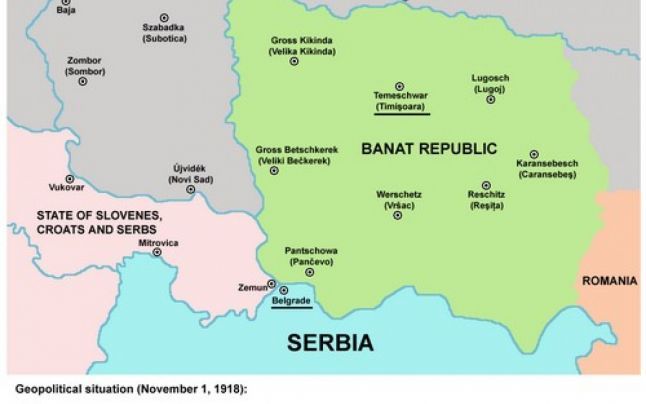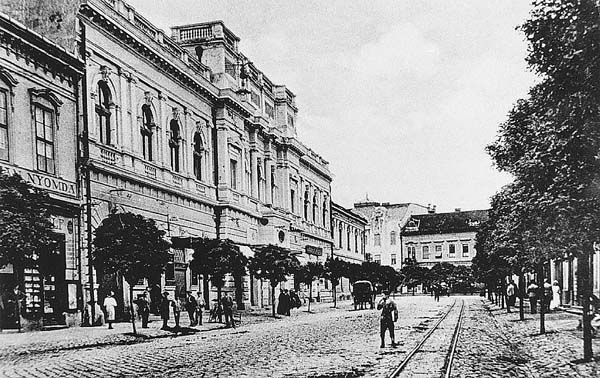The long peace after the end of the Franco-Prussian War in 1871 brought about an extended period of peace and prosperity across most of Western and Central Europe, named by the French „La Belle Époque” (French for Beautiful Era). In the Hungarian part of the Austro-Hungarian Empire this era came about a bit earlier with the 1867 Austro-Hungarian Compromise and is referred to as “boldog békeidők” (happy times of peace). Then came the Great War.
The year of 1918 was hardly a year any European who lived through it or has family or historic knowledge about would consider a year of grace. The Great War was in its final stages, with every self-respecting nation pitted against most others in a grab for additional territories. On top of it came the Spanish Flu that claimed another two million lives in Europe alone.
But for a small region of what is now divided between Hungary, Romania and Serbia it also had a somewhat glorious and unique period of 24 days when it had achieved statehood. This is the region known as Bánság or Bánát in Hungarian (Romanian: Banat).

With an area of 27,104 square kilometers it was only slightly smaller than present-day Albania, Armenia or Belgium. A part of the Kingdom of Hungary and later of the Austro-Hungarian Empire, it was under Ottoman rule from 1552 to 1718. After Prince Eugene of Savoy – a prolific statesman and general – claimed it back from the Turks, it was repopulated by many nations or nationalities. By WWI it was populated by a mix of Germans, Hungarians, Romanians, Jews, Slovaks, Ukrainians, Czechs and Bulgarians.
In 1914 the region’s de facto center, Temesvár (Timișoara) had a population of about 90,000, a thriving economic and cultural life with the multitude of its nationalities living in peace and prosperity. Even allowing for the bias of this article’s author, it was by any measure a modern European city.
The war changed all that. By the autumn of 1918, Serbia, Romania – and of course Hungary – all wanted to have it (or at least a part of it), while the various nationalities inhabiting it sided with one or the other, according to their respective nationalities or otherwise perceived interests.
Amid all this, a local politician, Ottó Róth (a lawyer by trade) made a daring attempt at independence: on October 31 he established the Bánát People’s Council and the following day – exactly 100 years ago, hence this article – the council proclaimed the independence of Bánát. His main aim was twofold: to keep the region together and – just as importantly – prevent it from falling into the hands of the Serbs or Romanians.
Hungary, of course, immediately recognized the new state – it was the only country to do so. However, Róth, his “minister of defense”, Colonel Albert Bartha and whatever troops they could muster stood no chance against the vastly more powerful geopolitical currents. Truth be told, the republic had no real pull even in the region itself and was opposed by the Romanian, Serb and German organizations of Temesvár.

In early November, Serbian and French troops began the occupation of the region and by November 19 Temesvár was in French hands. Despite a last-ditch diplomatic attempt from Hungary’s minister for nationalities Oszkár Jászi, the region was incorporated into Serbia on November 25, ending the 24 days of the Bánát Republic. It is now divided between Romania, Serbia and Hungary.
Róth – who together with his council fled to Budapest upon French occupation – later resumed his legal practice in Temesvár.
Title image: Flag of the Bánát Republic